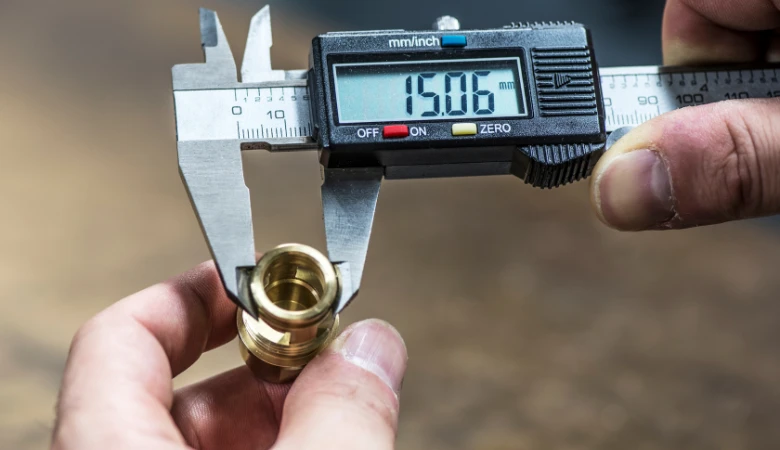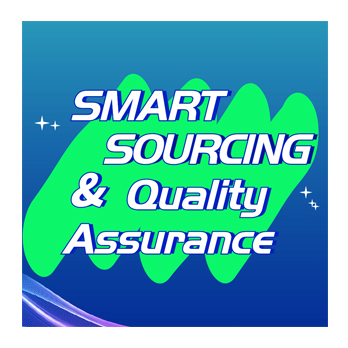
A quality control company acts as a neutral partner that helps you maintain quality in your products. You trust this external team to check if every item meets strict quality standards. The company uses a detailed process to examine, test, and monitor each product. This approach supports your business by reducing risk and ensuring compliance. You gain efficiency and improve customer satisfaction. Quality control focuses on meeting standards and keeping your customers happy with consistent quality and reliable results.
Quality Control Company Overview
Definition and Role
A quality control company works as your partner to help you achieve consistent quality in your products. You rely on this external team to check if your goods meet all required standards. The company uses a set of quality control methods to examine each item. You get an unbiased view of your products because the company acts as a neutral third party.
You can think of a quality control company as a bridge between your business and your customers’ expectations. The company focuses on quality management and uses strict quality control processes. These processes include testing, inspection, and monitoring. You benefit from their expertise in quality control because they know how to spot problems early. This helps you avoid costly mistakes and keeps your products in line with product standards.
A quality control inspector from the company visits your production site or warehouse. The inspector checks samples and uses different testing tools. You receive detailed reports that show if your products meet quality standards. This approach supports your quality management goals and helps you maintain a strong reputation.
Tip: You can use a quality control company at any stage of production. Early involvement often leads to better results.
Main Responsibilities
A quality control company takes on several key responsibilities to support your business:
• Inspection and Testing: You get thorough inspections and testing of your products. The company uses quality control methods to check for defects, measure performance, and ensure your items meet all standards.
• Monitoring Production: The company monitors your production process. You receive updates about any issues that could affect quality. This helps you make quick decisions and keep your process on track.
• Reporting and Documentation: You receive clear reports from the quality control inspector. These reports show the results of testing and inspection. You can use this information to improve your quality management system.
• Corrective Actions: If the company finds problems, you get advice on how to fix them. The company helps you take corrective actions so you can meet quality standards and avoid future issues.
• Training and Guidance: Some quality control companies offer training for your staff. You learn about quality control methods and best practices. This helps you build a culture of quality in your business.
| Responsibility | What You Gain |
|---|---|
| Inspection & Testing | Reliable products, fewer defects |
| Monitoring Production | Early problem detection |
| Reporting | Clear data for quality management |
| Corrective Actions | Solutions for quality improvement |
| Training | Stronger quality control knowledge |
You can see that a quality control company covers every part of the quality control process. You get support from setting standards to final testing. This helps you deliver products that meet both your own and your customers’ expectations.
Quality Control Process
The quality control process helps you make sure your products meet all required standards. You follow a step-by-step workflow that covers setting standards, testing, monitoring, and taking corrective actions. This process gives you a clear path to achieve consistent quality and continuous improvement. A quality control company acts as a neutral partner, providing systematic monitoring and evaluation at every stage.
Inspection and Testing
You start by setting clear quality standards for your products. These standards guide every step of the quality control process. You use quality control methods to check if your products meet these standards. The first step involves inspection and testing.
A quality control inspector visits your site to carry out inspections. You see them examine materials, parts, and finished goods. They use different testing tools to check for defects and measure performance. You benefit from both in-process inspections and final product inspections. In-process inspections catch problems early, while final product inspections confirm that the finished items meet all quality requirements.
You use testing products to find defects before they reach your customers. Testing includes checking size, weight, color, and function. You also use quality inspections to make sure every item matches your standards. This step helps you prevent defects and supports defect prevention.
Note: Regular inspection and testing help you catch issues before they become bigger problems.
Data Collection and Analysis
You collect data during every inspection and testing phase. This data includes measurements, test results, and notes about defects. You organize this information to spot trends and patterns. Data collection forms the backbone of your quality management system.
You analyze the data to see how well your products meet quality standards. You look for areas where defects happen most often. This analysis helps you understand the root causes of problems. You use the results to guide your next steps in the quality control process.
A quality control company provides you with detailed reports. These reports show you where your process works well and where you need improvement. You use this information to make decisions about changes in your production process.
| Step | What You Do | Why It Matters |
|---|---|---|
| Data Collection | Record test results and defects | Track quality and spot trends |
| Data Analysis | Review and interpret the data | Find root causes and solutions |
Corrective Actions
You take corrective actions when you find defects or problems during inspection and testing. This step is key for continuous improvement. You use the data and analysis to decide what changes to make. Corrective actions might include changing materials, updating equipment, or retraining staff.
You work with the quality control company to develop solutions. They help you set new standards or adjust your process. You monitor the results to see if the changes improve quality. If you still find defects, you repeat the process until you reach your quality goals.
Tip: Quick corrective actions help you avoid repeating the same mistakes and support ongoing improvement.
You focus on continuous improvement by reviewing your quality management system often. You update your standards and processes as needed. This approach keeps your products in line with customer expectations and industry requirements.
By following a structured quality control process, you build a strong foundation for quality management. You reduce defects, improve efficiency, and deliver products that meet high standards.
Customer Feedback and Quality Control
Gathering Customer Input
You play a key role in quality control by listening to your customer. You can collect customer input through surveys, online reviews, and direct communication. When you ask your customer for feedback, you show that you value their opinion. This helps you understand what your customer expects from your product.
You might use these methods to gather input:
• Send follow-up emails to your customer after a purchase.
• Offer online forms where your customer can share their experience.
• Monitor social media for comments from your customer.
• Hold focus groups to hear your customer’s thoughts in person.
Tip: Always thank your customer for their feedback. This builds trust and encourages more honest responses.
You gain valuable insights when you listen to your customer. You learn about their level of satisfaction and spot areas where you can make improvement. This information helps you focus on customer satisfaction and guides your next steps in quality control.
Using Feedback to Improve
You use customer feedback as a tool for improvement. When you notice patterns in what your customer says, you can adjust your process. For example, if your customer mentions a recurring issue, you can investigate and fix it. This leads to higher customer satisfaction.
You might take these actions based on feedback:
• Update your product design to meet customer needs.
• Train your team to address customer concerns.
• Change your quality control checks to prevent future problems.
A table can help you organize feedback and plan your response:
| Customer Input | Action Taken | Result |
|---|---|---|
| Product arrived damaged | Improved packaging | Higher customer satisfaction |
| Slow response to questions | Staff training on support | Faster help for customer |
| Feature request | Added new feature | Increased satisfaction |
You show your customer that you care about their experience. This focus on customer satisfaction supports continuous improvement and helps you build loyalty. When you act on feedback, you create a cycle of improvement that benefits both you and your customer.
Benefits of a Quality Control Company
Risk Reduction
You face many risks when you produce goods. A quality control company helps you lower these risks by checking your products at every stage. You use quality control to spot defects early. This step prevents faulty items from reaching your customer. You avoid costly recalls and protect your brand reputation. Regular testing and inspections help you meet quality standards. You also reduce the chance of compliance issues. When you catch problems early, you keep your business safe from legal trouble and unhappy customers.
Quality control gives you peace of mind. You know your products meet the right standards before they reach the market.
Compliance and Efficiency
You must follow strict rules in many industries. A quality control company helps you stay on track with regulatory compliance audits. You use their services to make sure your products pass all audits. This support keeps your business running smoothly. You avoid delays and fines. Quality control also makes your process more efficient. You get clear reports that show where you can improve. You use these insights to fix weak spots and reduce waste. Your team spends less time fixing defects and more time making quality products.
| Benefit | How It Helps You |
|---|---|
| Compliance | Pass audits and avoid penalties |
| Efficiency | Streamline production |
| Quality improvement | Fewer defects and less waste |
Business Value
You build strong business value when you focus on quality. A quality control company helps you deliver products that meet high standards. You gain trust from your customer. This trust leads to higher customer satisfaction and repeat business. You also protect your brand reputation. When you keep defects low, your customer sees your brand as reliable. Quality management supports your long-term growth. You stand out in the market because you offer consistent quality. The benefits of quality control reach every part of your business.
When you invest in quality, you invest in your future. Your customer rewards you with loyalty and positive feedback.
You see that the benefits of quality control go beyond just meeting standards. You reduce risks, improve efficiency, and boost your brand reputation. These benefits support your business goals and help you achieve lasting customer satisfaction.
Quality Control Company vs. Internal Teams
Key Differences
You might wonder how a quality control company compares to your internal teams. Both options help you manage quality, but they work in different ways. An internal team knows your products and processes well. You can train your staff to follow your quality standards. However, a quality control company brings outside expertise and a neutral view.
A quality control company uses proven methods to check your products. You get unbiased results because they do not have a stake in your production. This helps you spot defects that your team might miss. You also gain access to specialized tools and up-to-date knowledge about quality control.
Here is a quick comparison:
| Aspect | Internal Teams | Quality Control Company |
|---|---|---|
| Perspective | Internal | Neutral/External |
| Expertise | Company-specific | Industry-wide |
| Tools | Standard | Specialized |
| Flexibility | Limited | High |
| Detection of Defects | May miss some | More thorough |
Note: You can use both options together for stronger quality control.
Common Challenges Solved
You face many challenges when you try to maintain high quality. Sometimes, your team may overlook small defects because they see the same products every day. A quality control company helps you catch these issues. They use fresh eyes and strict quality control checks.
You may also struggle with changing regulations. A quality control company keeps up with new rules and helps you stay compliant. If you have a sudden increase in production, your internal team might feel overwhelmed. You can rely on a quality control company to handle extra inspections and testing.
Common challenges solved by a quality control company include:
• Detecting hidden defects before products reach your customers
• Reducing bias in quality control decisions
• Meeting strict industry standards and regulations
• Handling large orders without sacrificing quality
• Improving your overall quality management system
You get peace of mind knowing your products meet the highest quality standards. This support helps you build trust with your customers and avoid costly mistakes.
You rely on a quality control company to help you deliver products that meet high standards. Their expertise in quality control supports your business by reducing risks and improving customer satisfaction. You gain consistent quality, better compliance, and stronger brand reputation. When you focus on quality, you build trust with your customer and increase satisfaction. Consider using a quality control company if you want to improve your quality management and protect your business.
FAQ
What types of products can a quality control company inspect?
You can use a quality control company for almost any product. They inspect electronics, clothing, toys, machinery, and more. You get support for both consumer goods and industrial products.
How often should you schedule quality control inspections?
You should schedule inspections at key stages of production. Many businesses choose pre-production, during production, and before shipment. Regular checks help you catch problems early.
Can you customize the inspection checklist?
Yes, you can work with the company to create a checklist that matches your product’s requirements. You decide which features and standards matter most for your business.

Smart Sourcing & Quality Assurance Content Team
Article by Smart Sourcing & Quality Assurance Content Team
The Smart Sourcing & Quality Assurance Content Team is dedicated to delivering high-quality, easy-to-understand information that empowers our audience to navigate the complexities of global sourcing and quality assurance. Our team of writers has extensive experience in creating content across various fields, including procurement, supply chain management, quality assurance, market trends, and industry best practices. We specialize in sectors such as apparel, textiles, and consumer goods, providing targeted insights to help businesses in these industries optimize their sourcing strategies, ensure product quality, and maintain a competitive edge in the market.
Grow your business with TradeAider Service
Click the button below to directly enter the TradeAider Service System. The simple steps from booking and payment to receiving reports are easy to operate.



